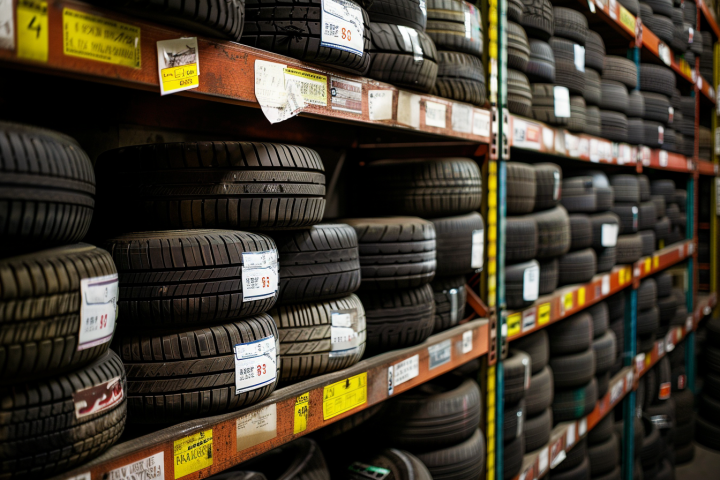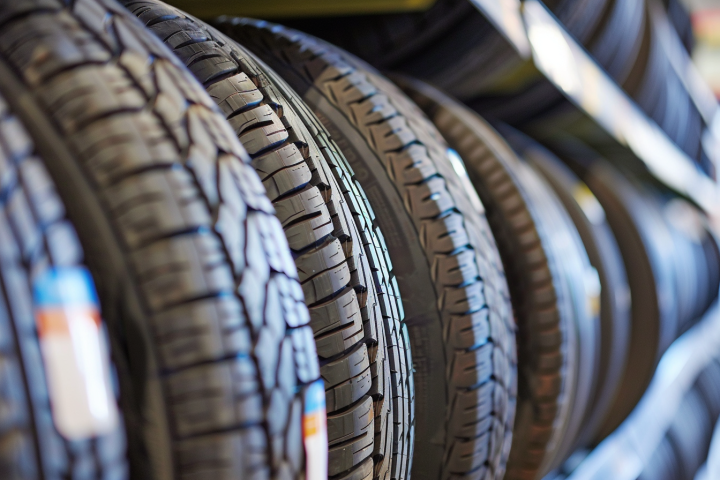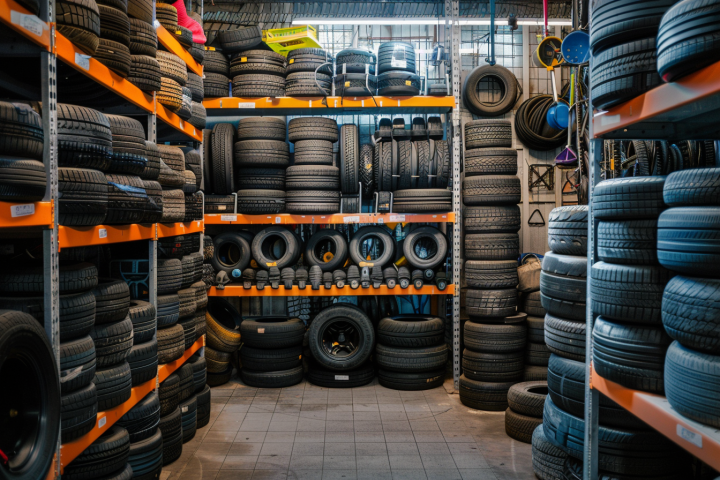Last Updated on 1 week
Unraveling the Complexities Behind Soaring Tire Prices
In the dynamic world of automotive maintenance and care, one aspect that often goes unnoticed until it directly affects the consumer is the fluctuation in tire prices. Understanding the economics behind tire pricing is not just a matter of corporate interest; it directly impacts end consumers, particularly those for whom vehicles are essential to daily life.
Understanding the Basics of Tire Economics
Tire economics is a complex field influenced by various factors, ranging from raw material costs to global economic policies. The price of a tire is not just a reflection of the cost of rubber; it encompasses a whole chain of financial events and decisions.
- Raw Material Costs: The primary material in tire production is natural and synthetic rubber. The prices of these materials fluctuate based on global demand, supply constraints, and environmental factors affecting rubber plantations.
- Manufacturing and Technology Costs: Advancements in tire technology, aimed at increasing safety and efficiency, also add to the cost. Manufacturing processes have become more sophisticated, requiring significant investment in equipment and research.
- Logistics and Distribution: The cost of transporting raw materials to manufacturing facilities and then distributing the finished products to various markets also adds to the overall price of tires. Fuel prices, shipping costs, and even tariffs impact this aspect.
- Market Competition and Branding: Brand reputation and market positioning play a significant role in pricing. Premium brands often charge more, reflecting their market status and the perceived quality of their products.
- Economic Policies and Tariffs: Government policies, trade agreements, and tariffs can significantly influence tire prices. Changes in these policies can either increase or decrease the cost, depending on the nature of the policy.
- Environmental and Safety Regulations: Compliance with environmental and safety regulations can lead to additional costs. Manufacturers invest in environmentally friendly materials and processes, which can be more expensive.

Importance of Understanding Tire Price Inflation
Understanding the factors that contribute to tire price inflation is crucial for several reasons:
- Consumer Awareness: Consumers can make more informed decisions about their purchases if they understand why prices vary. This knowledge allows them to weigh the cost against the quality and longevity of the product.
- Budgeting for Vehicle Maintenance: Vehicles are crucial for many individuals and businesses daily operations. Knowing the trends in tire prices helps with better budgeting and financial planning.
- Environmental Impact: Understanding the economic factors also means being aware of the environmental impact of tire production. Consumers can choose more sustainable options, thus influencing manufacturers to adopt greener practices.
- Market Dynamics: For investors and professionals in the automotive sector, knowledge of tire economics is vital for making strategic decisions.
- Policy Influence: With knowledge, consumers and advocacy groups can influence policy decisions affecting tire prices, such as tariffs and environmental regulations.
The Raw Material Conundrum
The raw material problem presents a significant challenge in intricate tire manufacturing. This aspect determines the quality and performance of tires and their market price. Tire manufacturers face a complex puzzle with the fluctuating availability and cost of essential materials like rubber and synthetic compounds. This dynamic significantly impacts the global tire industry, from production strategies to consumer end pricing. Understanding this problem is critical to grasping the broader economic and logistical factors influencing tire production and pricing.
Rubber: The Backbone of Tire Manufacturing
The manufacturing of tires predominantly hinges on one crucial material: rubber. This natural product is the lifeblood of tire production, providing the elasticity, durability, and grip essential for tire performance.
Two types of rubber are used in tire manufacturing: natural and synthetic.
- Natural Rubber: Extracted from the latex of rubber trees, natural rubber is highly valued for its superior elasticity and strength. Most of the world’s natural rubber comes from Thailand, Indonesia, and Malaysia. The cultivation of rubber trees and the tapping process for extracting latex are labor-intensive and sensitive to environmental conditions, making the natural rubber supply vulnerable to fluctuations.
- Synthetic Rubber: Synthetic rubber is a petroleum-derived product. It complements natural rubber in tire manufacturing by enhancing abrasion resistance and aging stability. The production of synthetic rubber is closely tied to the global petrochemical industry, making its price and availability susceptible to the volatile nature of oil prices.
Rising Costs of Synthetic Materials
The costs of synthetic materials have been on a steady rise, driven by several factors:
- Petrochemical Price Fluctuations: Synthetic rubber is derived from petrochemicals, so its cost is inherently linked to the price of crude oil. The global oil market is subject to various influences, including geopolitical events, changes in demand, and production adjustments by oil-producing countries.
- Environmental Regulations: Increasingly strict environmental regulations have impacted the petrochemical industry. Compliance with these regulations often requires significant investment in cleaner technologies and processes, indirectly raising the cost of synthetic rubber production.
- Market Demand: The demand for synthetic rubber is not limited to the tire industry. It is widely used in various industries, including automotive (non-tire components), healthcare, and consumer goods. The diverse applications create a competitive market, often pushing prices upward.
Impact of Global Supply Chain Disruptions
Like many others, global supply chain disruptions have significantly impacted the tire industry. These disruptions have various origins:
- Natural Disasters: Floods, droughts, and other severe weather conditions can drastically affect rubber plantations, reducing supply and increasing prices.
- Political Instability: Political unrest can disrupt production and exportation in countries where the rubber is a significant export, creating a ripple effect that impacts global supply.
- Pandemics and Health Crises: The recent COVID-19 pandemic is a prime example of how health crises can disrupt supply chains. Lockdowns and restrictions in movement led to decreased production and difficulties in logistics.
- Trade Disputes and Tariffs: International trade disputes can lead to the imposition of tariffs, affecting the cost of importing raw materials and thus impacting the overall cost of tire production.
Technological Advancements and Costs
Technological advancements in tire manufacturing have been a double-edged sword, offering remarkable benefits and additional costs. These innovations, from improved rubber compounds to intelligent tire systems, have significantly enhanced tire performance and safety. However, they also increase research, development, and production expenses. Understanding the balance between technological progress and associated costs is crucial for navigating the future of tire manufacturing and market pricing strategies. This insight into the interplay of technology and cost is critical to comprehending the evolving landscape of the tire industry.
Innovations in Tire Technology
The tire industry has undergone significant transformations in recent years, driven by technological innovations. These advancements aim to enhance tire performance, longevity, and safety while addressing environmental concerns. Some of the key innovations include:
- Advanced Tread Designs: Modern tread patterns are engineered for optimal grip, water displacement, and reduced noise. Computational fluid dynamics and other sophisticated modeling techniques are employed to design treads that maximize safety and efficiency.
- Improved Rubber Compounds: Advancements in material science have led to the development of new rubber compounds that offer better wear resistance, temperature tolerance, and overall durability. These compounds often incorporate silica and other materials to enhance performance.
- Airless Tires: Also known as non-pneumatic tires, these are being developed to eliminate the risk of punctures and reduce maintenance. They are particularly promising for heavy-duty and industrial applications.
- Intelligent Tire Technologies: Another innovation involves integrating sensors within tires to monitor pressure, temperature, and tread wear. These innovative tires can communicate with the vehicle’s systems, providing real-time data to improve safety and performance.
The Price of Enhanced Safety Features
While these technological advancements offer significant benefits, they also come with increased costs:
- Research and Development (R&D): Developing new tire technologies requires substantial investment in R&D. The costs associated with researching, testing, and patenting new designs and materials are considerable.
- Manufacturing Upgrades: Implementing new technologies often requires updating manufacturing equipment and processes, which can involve significant capital expenditures for tire companies.
- Product Premium: Tires featuring the latest technology are often considered premium products. Consequently, they carry a higher price tag compared to standard tires.
Environmental Compliance and Green Materials
Environmental sustainability is becoming a central focus in tire manufacturing, influencing both technology and costs:
- Eco-Friendly Materials: There is a growing trend towards using sustainable materials in tire production. This includes recycled rubber, bio-based materials, and non-aromatic oil. While beneficial for the environment, these materials can be more expensive to source and process.
- Energy-Efficient Manufacturing: Tire companies use more energy-efficient manufacturing processes to reduce their carbon footprint. This includes using renewable energy sources and recycling waste heat and materials.
- End-of-Life Tire Recycling: Developing technologies for recycling used tires into new products or energy sources is essential to environmental compliance. While this helps reduce waste, it also adds to the overall cost structure.
As a part of Giga Tires’ comprehensive analysis, understanding these aspects is vital for consumers and industry stakeholders, offering insights into the value and cost-effectiveness of modern tire technologies.
Economic Factors Driving Prices Up
Like many others, the tire industry is subject to various economic factors that can increase prices. Understanding these factors is essential for consumers and industry professionals to navigate the market effectively. This article delves into three critical financial elements that impact tire prices: inflation, labor and manufacturing expenses, import tariffs, and international trade policies.
Inflation and Its Effect on the Tire Industry
Inflation is a critical economic factor affecting all industries; the tire industry is no exception. Inflation refers to the general increase in prices and the fall in the purchasing value of money. Here is how it impacts the tire industry:
- Rising Costs of Raw Materials: Inflation often increases the cost of raw materials like rubber and synthetic materials used in tire production. As the prices of these materials rise, the cost of producing tires also increases.
- Operational Expenses: Inflation also affects the operating costs of running manufacturing facilities, including utilities, maintenance, and other overheads. These increased costs are typically passed on to consumers through higher prices.
- Purchasing Power: Inflation can decrease consumers’ purchasing power, potentially reducing demand for non-essential goods, including certain types of tires. This can further complicate pricing strategies for tire manufacturers.
Labor Costs and Manufacturing Expenses
Labor costs and manufacturing expenses are significant components of the overall cost of tire production. These include wages for workers, costs of maintaining and operating manufacturing facilities, and expenses related to quality control and testing.
- Wages and Benefits: As living costs rise, there is often pressure to increase wages and benefits for workers. These increased labor costs can contribute to higher prices for the end product.
- Technological Investments: Substantial costs involve investing in new technology and machinery to improve efficiency and product quality. While these investments can lead to long-term savings, the initial expenditure can increase tire prices.
- Quality and Safety Standards: Meeting various quality and safety standards is essential but costly. These costs, necessary to ensure the production of safe and reliable tires, are factored into the product’s final price.
Import Tariffs and International Trade Policies
The tire industry is global and significantly influenced by international trade policies and import tariffs.
- Import Tariffs: Tariffs imposed on imported materials used in tire manufacturing can increase costs. For instance, tariffs on rubber imported from certain countries can raise production costs for tire manufacturers.
- Trade Agreements: International trade agreements can alleviate or exacerbate the cost pressures on the tire industry. Agreements that reduce trade barriers can lower costs, while those that impose restrictions can increase them.
- Global Supply Chain Dynamics: Changes in international trade policies can impact the global supply chain, affecting everything from raw material costs to specific products’ availability. These changes can cause fluctuations in tire prices.
As part of Giga Tires’ commitment to providing comprehensive insights, this analysis of economic drivers offers a deeper understanding of the complexities behind tire pricing.
Market Dynamics and Consumer Trends
The tire industry is a dynamic sector continuously evolving in response to consumer demand, automotive trends, and competitive forces. Understanding these changes is crucial for both consumers and industry players. This article will explore the shifts in consumer demand, the influence of automotive trends, and the competition and pricing strategies in the tire industry.
Shifts in Consumer Demand
Consumer preferences and demands play a pivotal role in shaping the tire industry. Several key factors are currently influencing consumer behavior:
- Demand for Eco-Friendly Tires: With growing environmental awareness, there is an increasing demand for tires made from sustainable materials and those that offer better fuel efficiency.
- Quality and Durability: Consumers increasingly seek high-quality, durable tires with longer life spans and better value for money.
- Preference for Specialty Tires: There is a growing market for specialty tires, such as run-flat tires, airless tires, and tires designed for electric vehicles. These tires offer unique benefits and cater to specific consumer needs.
- Price Sensitivity: In fluctuating economic conditions, many consumers are becoming more price-sensitive, looking for affordable options without compromising safety and performance.
The Role of Automotive Trends
Automotive trends significantly impact the tire industry, dictating the types of tires required to meet the needs of new vehicle designs and technologies:
- Electric Vehicles (EVs): The rise of EVs has led to a need for tires that can support heavier loads (due to the weight of batteries), have low rolling resistance to maximize range, and are quiet to complement the reduced noise levels of EVs.
- Autonomous Vehicles: As autonomous driving technology advances, there is a potential demand for innovative tires equipped with sensors that provide real-time data for vehicle safety systems.
- Performance Vehicles: The popularity of high-performance vehicles has led to increased demand for high-performance tires that offer better grip and handling at higher speeds.
Competition and Pricing Strategies in the Tire Industry
The tire market is highly competitive, with numerous manufacturers vying for market share. This competition influences pricing strategies in several ways:
- Premium vs. Budget Brands: There is a precise segmentation between premium and budget brands. Premium brands often invest more in technology and marketing and price their products higher. Budget brands, on the other hand, compete primarily on price.
- Innovative Pricing Models: Some tire companies are exploring new pricing models, such as subscription services for tire maintenance and replacement, to differentiate themselves in the market.
- Global vs. Local Brands: Global brands often have the advantage of scale, but local brands can compete effectively by catering to specific regional preferences and conditions.
- Promotional Strategies: Manufacturers and retailers frequently use promotions, rebates, and discounts to attract price-sensitive consumers, especially in highly competitive markets.

The Impact of Geopolitical Events
In the globalized economy, the tire industry is not immune to the impacts of geopolitical events. These events can significantly disrupt the industry’s supply chain, from raw material access to end-product delivery. This article examines how global political instability, trade wars, and global crises affect the tire industry.
Global Political Instability and Raw Material Access
The tire industry heavily relies on specific raw materials like natural rubber, predominantly sourced from Thailand, Indonesia, and Vietnam. Political instability in these regions can have far-reaching effects:
- Disruption in Supply: Political unrest or instability can disrupt the supply of raw materials, leading to shortages and increased prices.
- Impact on Labor and Production: Political instability can also affect these regions’ labor force and production facilities, further hindering the supply of essential materials for tire production.
- Transportation and Logistics Challenges: Political instability can lead to difficulties in transportation and logistics, making it challenging to move raw materials out of the affected region.
Trade Wars and Their Implications for Tire Prices
Trade wars and tariff impositions can have a significant impact on tire prices in various ways:
- Increased Costs of Raw Materials: Tariffs on imported raw materials can increase the cost of production for tire manufacturers. This increased cost is often passed on to the consumer through higher prices.
- Impact on Export and Import: Trade wars can reduce tire exports or imports, affecting availabimarket availability and pricing. Tariffs: Countries involved in trade wars may impose retaliatory tariffs, further complicating the international trade of tires and related materials.
The Effects of Global Crises on Supply Chains
Global crises, such as pandemics, economic recessions, or natural disasters, can significantly disrupt the tire industry’s supply chains:
- Disruption in Manufacturing: Crises like pandemics can shut down manufacturing plants, causing delays in production and supply.
- Logistics and Transportation Issues: Global crises can affect transportation and logistics networks, challenging moving raw materials and finished products and leading to supply chain bottlenecks.
- Fluctuations in Demand: Economic downturns can lead to decreased vehicle demand and, consequently, tires. Conversely, a sudden upturn can lead to a rapid increase in demand, which supply chains may struggle to meet.
Analysis of Regional Market Variations
Significant regional variations characterize the global tire market. Many factors, including price trends, local supply chain dynamics, and provincial regulations, drive these differences. Understanding these variations is crucial for industry players and consumers navigating the tire market’s diverse landscape. This article explores these regional differences and their implications.
Price Trends in Different Geographical Areas
Tire prices vary considerably across different regions due to various factors:
- Economic Conditions: In regions with more robust economies, consumers often have higher purchasing power, which can drive up tire prices due to increased demand for high-quality or premium tires.
- Market Competition: In areas with a higher concentration of tire manufacturers and distributors, competition can lead to more competitive pricing, benefiting consumers.
- Transportation and Tariffs: Regions far from tire manufacturing hubs often face higher prices due to the added costs of transportation. Additionally, tariffs imposed by local governments on imported tires can further increase prices.
Local Supply Chain Dynamics
The efficiency and structure of local supply chains play a vital role in tire availability and pricing:
- Proximity to Manufacturing Facilities: Regions near tire manufacturing facilities often enjoy lower prices due to reduced transportation and logistics costs.
- Local Manufacturing Capabilities: Regions, with their tire manufacturing capabilities, can often offer lower prices due to the absence of import costs and reduced transportation expenses.
- Supply Chain Resilience: Regions with robust and diversified supply chains are better equipped to handle disruptions and maintain stable tire supply and prices.
Regional Regulatory Impacts on Prices
Government regulations can significantly impact tire prices in different regions:
- Environmental Regulations: Regions with stringent environmental regulations may see higher tire prices due to the increased compliance costs for manufacturers. These regulations can include restrictions on certain materials or mandates for using eco-friendly components.
- Safety Standards: Higher safety standards can increase production costs, as tires must undergo more rigorous testing and quality control measures.
- Import and Export Policies: Regions with protective trade policies, such as high tariffs on imported tires, can have higher tire prices, while those with free trade agreements may benefit from lower prices.
Understanding these regional characteristics is essential for Giga Tires to cater to diverse market needs and preferences effectively. This ensures that consumers are well-informed and can make the best decisions about their tire purchases. This analysis provides a deeper insight into the regional nuances of the global tire market, helping stakeholders navigate its complexities.
Future Technologies and Their Economic Impacts
The tire industry is on the cusp of a technological revolution, with emerging innovations poised to reshape tire manufacturing, reduce costs, and usher in a new era of sustainability. This article examines the future of tire technologies and their potential economic impacts, exploring how these advancements could transform the industry.
Emerging Technologies in Tire Manufacturing
Several cutting-edge technologies are set to revolutionize tire manufacturing:
- Innovative Tires: Equipped with sensors, intelligent tires provide real-time data on road conditions, tire wear, and performance, enhancing safety and efficiency.
- 3D Printing: This technology offers the potential for rapid prototyping, custom tire designs, and even on-demand tire production, leading to more efficient manufacturing processes.
- Airless Tires: Airless or non-pneumatic tires, which are puncture-proof and require less maintenance, are becoming increasingly viable, particularly for commercial and industrial vehicles.
- Advanced Materials: The use of nanomaterials and advanced polymers can lead to tires that are lighter, more durable, and perform better under varying conditions.
Potential Cost Reductions Through Innovation
Innovations in tire manufacturing hold the promise of significant cost reductions:
- Efficient Production: 3D printing and automation can streamline production processes, reduce waste, and lower manufacturing costs.
- Extended Tire Life: Advanced materials and design can lead to longer-lasting tires, reducing the frequency of tire replacements for consumers and fleet operators.
- Reduced Maintenance Costs: Smart tire technologies can optimize maintenance schedules and prevent costly breakdowns, offering long-term savings.
The Future of Sustainable Tire Production
Sustainability is becoming increasingly crucial in tire manufacturing, with several initiatives aimed at reducing the environmental footprint:
- Eco-Friendly Materials: Research is ongoing into sustainable materials like bio-based rubbers and recycled materials, which are less environmentally harmful.
- Recycling Innovations: New methods for tire recycling are being developed to convert old tires into valuable materials, reduce landfill waste, and create a circular economy.
- Energy Efficiency: Efforts are being made to make tire production more energy-efficient, reducing greenhouse gas emissions from manufacturing plants.

Conclusion & Recommendations
In concluding our comprehensive exploration of the tire industry, it is crucial to synthesize the critical drivers of tire price inflation and project the future outlook of this dynamic sector. This analysis not only aids in understanding the current market trends but also provides valuable insights for future planning and decision-making. As we transition to recommendations, we aim to guide consumers and industry stakeholders in navigating the complexities of the tire market, ensuring informed and strategic choices in their tire-related endeavors.
Summarizing the Key Drivers of Tire Price Inflation
With its global reach and complex supply chain, the tire industry is influenced by many factors contributing to tire price inflation. Key among these are the fluctuating costs of raw materials like natural and synthetic rubber, impacted by geopolitical events, environmental policies, and market demands. Technological advancements, while enhancing tire quality and performance, increase production costs. Economic factors such as inflation, labor costs, and import tariffs significantly shape tire prices.
Consumer trends and market dynamics further influence pricing strategies within the tire industry. The growing demand for eco-friendly and technologically advanced tires and the evolving needs of electric and autonomous vehicles continue to shape the market. On the supply side, local supply chain dynamics and regional regulations complicate tire manufacturing and distribution.
Future Outlook for the Tire Industry
The tire industry is poised for significant transformations driven by innovation and sustainability. The advent of intelligent tire technologies, airless tires, and advanced materials promises to revolutionize tire performance and longevity. These advancements can lead to more efficient production processes and potentially reduce the overall lifecycle cost of tires.
Sustainability will remain a key focus, with the industry increasingly turning to eco-friendly materials and energy-efficient manufacturing processes. This shift aligns with global environmental goals and caters to the rising consumer demand for greener products.
Why choose Giga Tires?
In navigating this dynamic landscape, consumers and businesses must stay informed and make well-considered choices regarding tire purchases. At Giga Tires, we understand the complexities of the tire market and are committed to offering a wide range of tire options that meet various needs and preferences. Whether looking for the latest tire technology, seeking budget-friendly options, or prioritizing sustainability, Giga Tires has a solution for you.
We invite you to explore our extensive collection of tires, where quality meets affordability. Our user-friendly website simplifies finding the right tires for your vehicle, ensuring a seamless shopping experience. With Giga Tires, you are not just purchasing tires but making a choice that balances performance, safety, and value.
Click here to find your perfect tire fit at Giga Tires
Choose Giga Tires for a drive that combines innovation, sustainability, and economy – a decision that leads you to intelligent and conscious tire ownership.
FAQs
What makes tires so expensive?
Tires are expensive due to the complex manufacturing process involving high-quality materials like natural and synthetic rubber, advanced technologies for safety and efficiency, and rigorous testing to meet safety standards. Global supply chain dynamics and economic factors like raw material prices and labor costs also influence the costs.
What drives the price of tires?
The price of tires is driven by several factors, including the cost of raw materials (rubber, steel, and chemicals), technological innovations, manufacturing and labor costs, brand positioning, and global economic conditions such as inflation and trade policies. Environmental compliance and advancements in tire safety features can also contribute to the price.
Why are tires inflated?
Tires are inflated to provide air cushion between the vehicle and the road, offering a more comfortable ride and reducing the impact on the wheels. Proper inflation is essential for tire longevity, fuel efficiency, and optimal vehicle handling and safety.
How much does one tire cost?
The cost of a single tire can vary widely, depending on the type, brand, and specifications. Prices can range from as low as $50 for a basic tire to several hundred dollars for high-performance or specialized tires designed for specific vehicles or driving conditions.
What Are the Main Causes Behind the Rising Prices of Tires?
The primary causes for rising tire prices include the escalating costs of raw materials like rubber, supply chain disruptions, and increased manufacturing and labor expenses. Investing in new technologies for improved tire performance also contributes to higher prices.
How Does the Global Economy Influence Tire Prices?
Tire prices are influenced by global economic factors such as fluctuations in raw material costs, trade policies, tariff changes, and overall economic conditions like inflation. Financial stability in key rubber-producing countries also plays a crucial role.
Are Technological Advancements in Tires Contributing to Higher Costs?
Technological advancements in tires, including enhanced safety features, eco-friendly materials, and performance improvements, contribute to higher costs. These innovations require significant research and development investment, often reflected in the price.
What Impact Do Environmental Regulations Have on Tire Pricing?
Environmental regulations to reduce pollution and promote sustainability can increase tire production costs. Compliance with these regulations often requires using more expensive, eco-friendly materials and upgraded manufacturing processes.
What Strategies Can Consumers Use to Cope with Increasing Tire Prices?
Consumers can cope with rising tire prices by researching and comparing prices, opting for tires with longer lifespans, taking advantage of promotions and discounts, and maintaining their tires properly to extend their usability.










